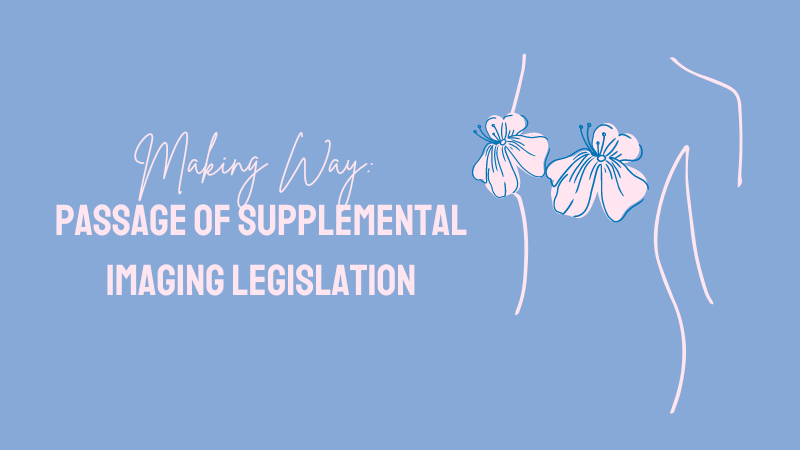
- Blog /
- July 10, 2024
Making Way: Passage of Supplemental Imaging Legislation
New guidelines are bringing breast density to the forefront of discussions in women's health. Among many other states, New Hampshire, Louisiana and Iowa are the newest to pass legislation to bolster reimbursement for breast imaging services, if the mammogram is considered indeterminate. Starting next year, health insurance policies, contracts and plans must cover breast imaging without less favorable terms than those for screening mammography. A national version of the legislation is pending in Washington, D.C., eliminating cost for patients insured by federally regulated health plans.
As acknowledged in the Senate bills, digital breast tomosynthesis (DBT), ultrasound, and MRI are useful adjunct imaging modalities alongside conventional mammograms. Although these imaging options can be life-saving, there is still no widely available modality without significant limitations. Breast MRI may be considered one of the most sensitive imaging tools for women with dense tissue, but it is less available, more expensive, and bothersome for claustrophobic patients. Contrast mammography may be readily available, but it also has disadvantages such as radiation exposure and the need for compression.
Our FDA-cleared, dedicated Koning Vera Breast CT device combines the best of all worlds by introducing accurate, true 3D breast imaging. Our device is especially effective in imaging dense breast tissue and visualizing calcifications when using contrast. Similar to whole body CT imaging, contrast enhanced breast CT imaging increases specificity in early-stage cancer detection when compared to mammography. The Koning Vera Breast CT acquires these improved images in a matter of seconds and at radiation levels in the same range as conventional mammograms.
Beyond the crucial matter of density, our technology also overcomes painful compression. Research shows that women find our device much more comfortable than mammography, and the numbers speak for themselves: During a 2022 HealthyWomen survey, 1 in 6 women reported that discomfort has deterred them from getting a mammogram as recommended. By eliminating compression and developing new technologies that are truly accessible and just as effective at imaging dense breasts, we get closer to a reality of far fewer false negatives. Most importantly, by building innovation that keeps women healthy without trade-offs, we can equalize early detection for the first time.
Source:
“3 more states pass legislation bolstering breast imaging coverage” by Marty Stempniak, Radiology Business, June 05, 2024
